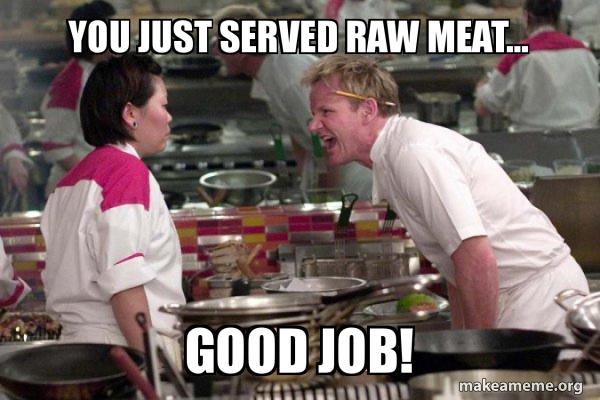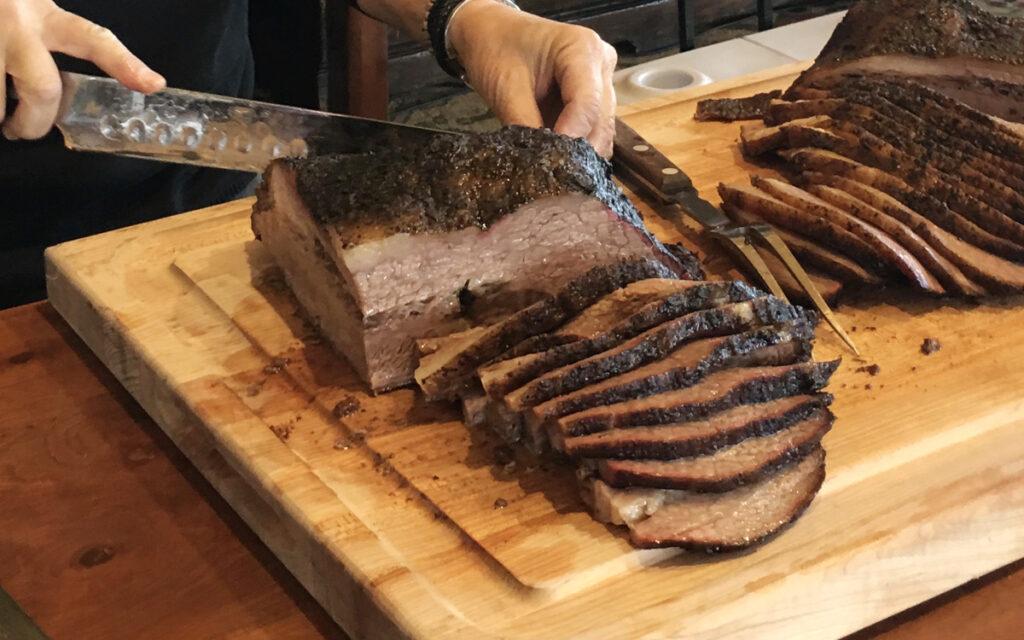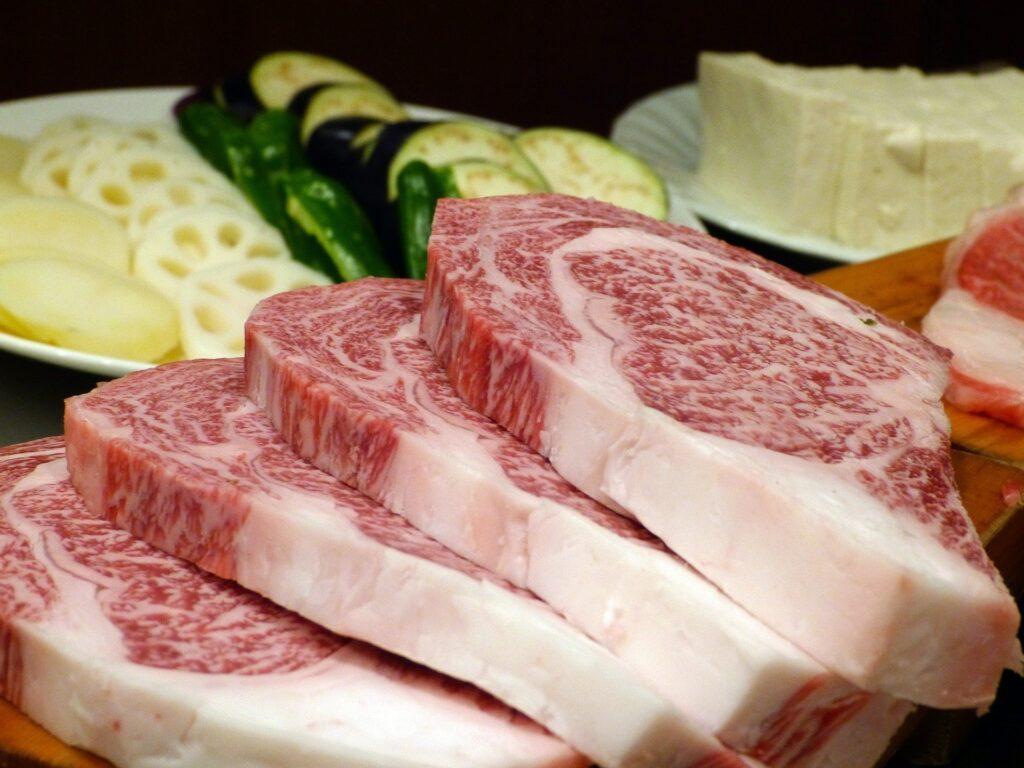One of the most confusing parts about tracking calories and macros is the infamous question, “When counting calories do you weigh meat before or after cooking?”
Valid question.
The short answer: Keep It Simple Stupid.
The long answer: Read all of this 👇🏼
Use a food scale…or else

One of the biggest mistakes you can make as a N00b to fitness is not using a food scale.
This part of the article is strictly dedicated to telling you to do that.
“But jEff, iSn’T tHaT aN eAtInG dIsOrDeR??!”
Shut it, Karen.
You weigh out food when you’re baking stuff right? Is that obsessive? Or just following a damn recipe?
Now all of a sudden when it comes to your health, it’s obsessive…SMH.
Time and time again, I have seen my online coaching clients fight me tooth and nail when it comes to using a food scale.
Ultimately, when they end up doing it, they start to see much more rapid results.
Using a food scale means you will be more accurate.
Being more accurate means less body fat.
Less body fat means better health and looking like you actually lift.
Now that we got that out of the way, here’s the meat and potatoes. Get it?
Do You Weigh Meat Before or After Cooking?

So finally the answer to the big question:
When counting calories, do you weigh your meat raw or cooked?
When I first started my fitness journey, I heard people say that weighing food raw was the most accurate.
While this may be true, it’s just not realistic for those of us who have lives and don’t want raw chicken juice all over our kitchen counters every day.
Not to mention, MOST people cook for more than just themselves. This makes weighing raw proteins a challenge.
What if I’m at a friend’s house? Am I supposed to bring my food scale and weigh out my 6 oz. of chicken before they grill it up?
No. Now THAT is taking it a little too far, even for me.
Weighing my food raw before cooking not only sounded like a chore, but it also sounded totally unsustainable.
Remember, what you can’t sustain, you won’t INGRAIN.
In other words, do stuff that you could see yourself doing for a very, very long time.
What I Recommend
I usually prep my proteins ahead of time for the week. I will usually buy a pack of chicken breasts from Costco and marinate them or at least season them overnight. I then cook all of my protein and throw it in a couple of Tupperware containers.
No weighing of raw meat is required.
We know that on average, most proteins lose about 25-30% of their weight from water.
This means that if I cooked a 6 oz portion of chicken breast, I would usually end up with about 4.5 ounces cooked.
So what if I am just weighing out the cooked chicken on my salad?
I would simply weigh however many ounces I wanted, for me, it’s usually 6…then I would multiply by anywhere between 1.4-1.5…
EX: 6 ounces of cooked chicken would be equal to around 8-9 ounces of raw chicken.
I search “raw chicken breast” in Myfitnesspal, then enter 9 ounces of chicken breast. This will be accurate, but not PERFECT.
Remember, we want progress.
NOT perfection.
What about proteins cooked to medium rare?

For something like a steak, you would use a smaller multiplier.
For something like a medium rare steak, for example, you would simply weigh out how much cooked steak you want, and multiply by 1.3 for medium.
You could use 1.1 for medium rare.
Remember, this is NOT the most accurate way, but it is the most sustainable way for myself, and probably for you.
An Alternative
There is a more accurate way to do this if you really want to be spot on.
You can buy your pack of chicken breast for the week, and look at how many ounces are in the total pack.
Let’s say you buy a 3-pound pack of chicken breasts for the week.
You can create a new recipe in Myfitnesspal, and enter a total of 3 pounds raw. That’s 48 ounces of raw chicken. Then you choose how many servings you want to create. I would do something like 6 servings. Then cook the chicken, and divide that into 6 different containers.
This method is really for those who have a lot more control over their food environment, and are mainly just cooking for themselves. I could not see this method really works well for those who are cooking meals for their family, and since most of my online coaching clients have families, the first method above would get you close enough.
Away from home? DO THIS.
There are many times when I am out to a restaurant, hanging with friends, and there is a plate of food in front of me that I need to do some serious estimations to calculate the calories. Luckily I am like the Rain man of Macros, so I will pass this knowledge down to you 🙂
I’ve also written a super detailed article about how to figure out the calories in restaurant food, so go check that out.
A portion of protein, 3-4 ounces, is about the size of a deck of cards, or the size of your palm. This means that whatever that protein is, you would just enter in how many portions it looks like.
For example, if you had a plate of food like this:

We can estimate by using our palm that this would be about 1.5 servings of chicken thighs, so we would enter about 5-6 ounces of chicken thighs in Myfitnesspal. When estimating, I always use the raw entries in my tracking app because it is going to be a little higher in calories, and you should always account for any extra cooking oil or spices used.
Restaurants ALWAYS use oil. This means your meal has an extra 130-300 calories worth of oil used to cook their food.
THOSE CALORIES COUNT.
As a matter of fact, it’s what makes eating at restaurants so challenging when you are in a calorie deficit.
It’s never going to be perfect, but the goal is to still stay on track while hitting your protein targets and not having too much worry or anxiety about going out and enjoying a meal.
After all, what are you going to remember 10 years from now? Your anniversary dinner with your spouse, or making sure you tracked every calorie to the gram?
What I’m trying to say is—live your damn life and stop trying to be perfect. Your fitness journey is about improving the quality of your life, it’s NOT about giving you food anxiety.
Common Mistakes We All Make

I remember when I used to weigh out all of my proteins cooked, and enter them as the raw weights in Myfitnesspal. If it doesn’t specifically specify “cooked” or “grilled”, then you can be pretty sure that it’s the raw entry. This is an easy way to add hundreds of calories to your day, especially when most of your meals are centered around protein.
I thought I was eating around 2100 calories in my calorie deficit when it turns out I was averaging around 2500-2700. This means that I was eating around my maintenance and didn’t even know it. Pretty frustrating, but luckily I was training hard and built some muscle, so it wasn’t a total waste of time.
Another common mistake I see if people getting WAY too obsessive around their fitness and tracking.
I have been guilty of this in the past, oftentimes forgoing meals with friends, or bringing Tupperware containers to restaurants.
Packing chicken and rice around in a cooler bag is not necessary, and may even cause some tension in your relationships and social life.
BOTTOM LINE–Counting calories: Do You Weigh Meat Before or After Cooking?
Fitness should be about improving your life, not making it more restrictive and obsessive.
After all, we all want to look better naked, improve our relationship with food, and improve our health right? So why does that mean we need to give up our weekly pizza nights, or having Chinese food with our fam? It doesn’t. This is why I’m such a big advocate for tracking calories and being flexible on your fat loss journey.
Does this mean you should be going out to eat 3-4 times per week in a fat loss phase? Probably not, but it happens. I think the best line of defense is to find some options that help you stay on track, even at your favorite local spots.
If this article was helpful, let me know down below in the COMMENTS, or drop any questions you got!
Talk soon,
-JP


Pingback: Awesome Free Weight Loss Meal Plan and Grocery List |